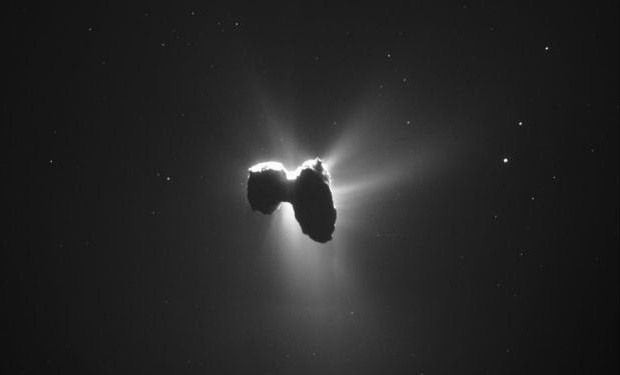Since its launch in 2004, the Rosetta spacecraft has traveled almost 5 billion miles, passed close to Mars and two asteroids before coming close enough to Comet 67P in 2014 to launch the Philae probe onto its surface. Rosetta is now trailing Comet 67P at a speed of 12 miles per second, and is roughly 250 million miles from Earth. Last week it sent back a spectacular image of the giant space rock, using our sun as a backdrop.
With Comet 67P now heading farther away from the sun, Philae’s solar panels will soon not be able to generate enough power to gather data. It has been decided therefore that Rosetta and Philae’s mission will end this September when controllers direct Rosetta to “land on” Comet 67P (read: crash into.) “Mission officials will endeavor to make this touchdown a gentle one, to ensure data is returned for as long as possible,” reports the BBC. “But it will bring the whole venture to an end. Rosetta will likely be damaged by the impact and drop all contact with Earth.”
